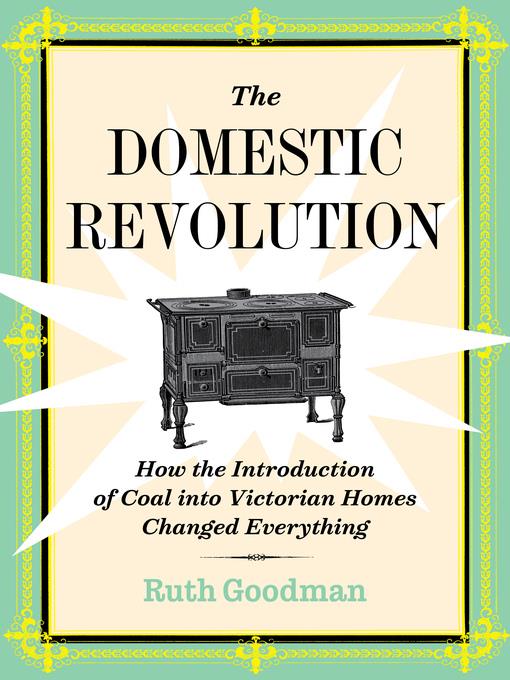
The Domestic Revolution
How the Introduction of Coal into Victorian Homes Changed Everything
کتاب های مرتبط
- اطلاعات
- نقد و بررسی
- دیدگاه کاربران
نقد و بررسی

August 31, 2020
Historian Goodman (How to Behave Badly in Elizabethan England) delivers an immersive account of how England’s switch from wood to coal as a primary fuel source sparked massive social change. Between 1570 and 1600, Goodman writes, “a single generation or two of Londoners,” many of them women “operating primarily within the domestic sphere,” made the change primarily for economic reasons. She draws on recipe collections, property surveys, household accounts, and probate inventories to highlight coal’s impact, noting, for instance, changes in the landscape as landowners, considering trees and shrubs less essential, converted heaths and wooded pastures to cropland. Chimneys and smoke-free upstairs rooms accelerated changes to the home, as did gridirons, grates, and cast-iron pots that could handle the higher temperatures coal produced. Rising demand for these domestic products spurred technological innovations that helped pave the way for the Industrial Revolution, Goodman writes. She also describes changes in British cuisine (boiled and baked dishes replaced thick medieval porridges) and the rise of soap and new cleaning standards to deal with sticky, soot-smudged interiors. A consistently witty and knowledgeable narrator, Goodman reveals in this highly informative study how small decisions made by ordinary people can change history. Agent: Lesley O’Mara, Michael O’Mara Books

September 1, 2020
British social historian Goodman, whose previous books brought Tudor and Victorian societies to life, now turns to the advent of coal use. Beginning in the 1500s, the increasing use of coal transformed heating, cooking, architecture, road-building, and, not least, London's air. Although coal was adopted early by lime burners (who produced mortar for building) and blacksmiths, the greatest use was in homes. "The early rise of coal," writes the author, "is not a story about industry; it is a tale of domestic needs and comforts, of individual, private choices." After a brisk overview of other forms of fuel--wood, peat, dung--Goodman offers a detailed, abundantly illustrated picture of the ways coal changed daily life for all classes throughout Great Britain, drawing from a prodigious number of sources, including property inventories, house expenditures, town records, housekeeping manuals, and recipe books. In addition, she recounts her own experiences in facsimile houses, cooking and heating with different kinds of fuel and confronting the "nonstop cleaning" of the filth resulting from burning coal. "Coal meant more smoke within the living area," she notes, "and it meant smoke that stung the eyes and affected breathing." Nevertheless, coal became increasingly popular because it burned with a "small and uniform" flame and was plentiful, leaving more land for agriculture. Within a few decades, houses had chimneys, kitchens had grates, and cooks had new recipes. The "cuisine of coal" included "boiled or steamed puddings both sweet and savoury, roast meats which are in fact baked meats served with 'roast' potatoes and all the trimmings, Victoria sponge cakes and hot buttered toast with jam." For several centuries, coal served as the predominant fuel for homes and industry. While in continental Europe and the U.S., "domestic coal-burning barely lasted a century," Londoners "cooked on coal for over 350 years." An engaging history of social transformation.
COPYRIGHT(2020) Kirkus Reviews, ALL RIGHTS RESERVED.

Starred review from September 1, 2020
After a career spent studying and recreating English domestic life, from medieval times to the Victorian period, historian Goodman (How to Behave Badly in Elizabethan England, 2018) is uniquely qualified to uncover how a seemingly minor change in consumer choices can dramatically alter people's lives and society as a whole. Having seen for herself the difference between running a period home fueled by wood and a coal-powered household, she makes that the springboard for an entertaining and wide-reaching investigation of how thousands of fuel-starved Londoners shifting to coal in the late-sixteenth and early-seventeenth centuries set in motion a transformation of English food, homemaking, transportation networks, landscapes, and industry, all of which, in turn, shaped the modern world. Goodman uses vivid historical anecdotes and personal experience to explain how the changes unfolded, step by step. Adopting coal fires for cooking, for example, created demand for iron pots designed for the new heat source, which led to a larger, more sophisticated iron industry, which ultimately provided the raw materials for coal-fueled early industrialization. "The domestic matters," she concludes. "It is the base unit upon which all else is built." This immensely readable study makes a clear and convincing case for overlooked aspects of the significance of home life.(Reprinted with permission of Booklist, copyright 2020, American Library Association.)

September 1, 2020
What happens when you switch from a wood fire to a coal-fueled one? Social historian Goodman's (How to Be a Tudor; How to Be a Victorian) new book shows that the difference between the two is so marked that revolution is an apt word to describe England's 17th-century change in household fuel. Drawing on historical sources and hands-on experience, Goodman provides a thorough account of when and why the swap from wood to coal occurred and how it permanently altered the English landscape (old forms of land management disappeared); foods and recipes of choice (porridge was out, toast was in); and the design, decoration, and cleaning of homes. While her explanations of subjects such as tree coppicing and coal transport may delve a bit too deep for casual readers, her lively treatment of how the shift to coal affected multiple facets of English life and her drily humorous personal anecdotes make this an interesting and enjoyable read overall. The book includes helpful illustrations to add context. VERDICT A fascinating, fun view of how far-reaching changes resulted from choices in household fuel. This will be particularly valuable for those interested in the unwritten history of domestic labor and "women's work."--Kathleen McCallister, William & Mary Libs., Williamsburg, VA
Copyright 2020 Library Journal, LLC Used with permission.

























دیدگاه کاربران